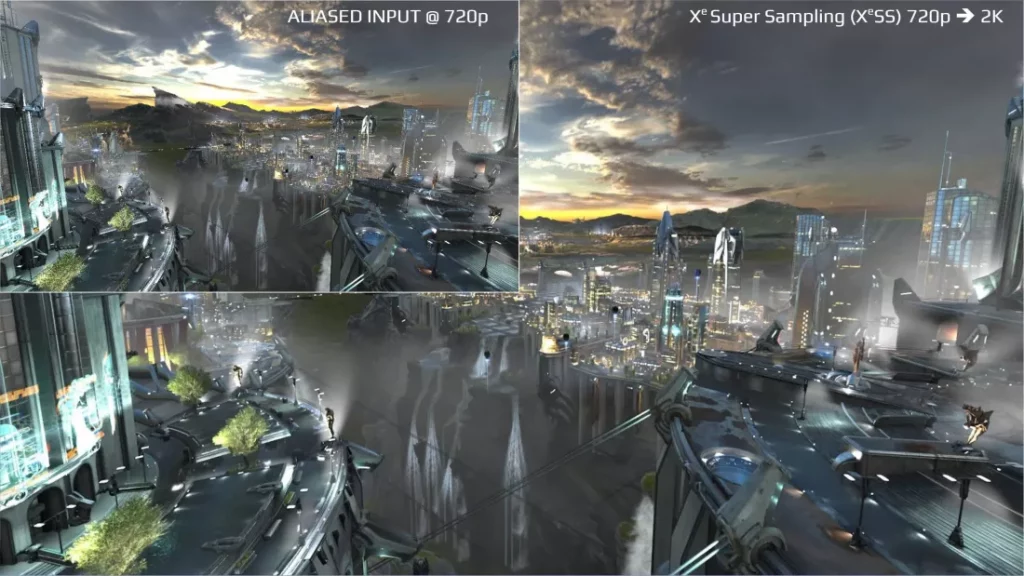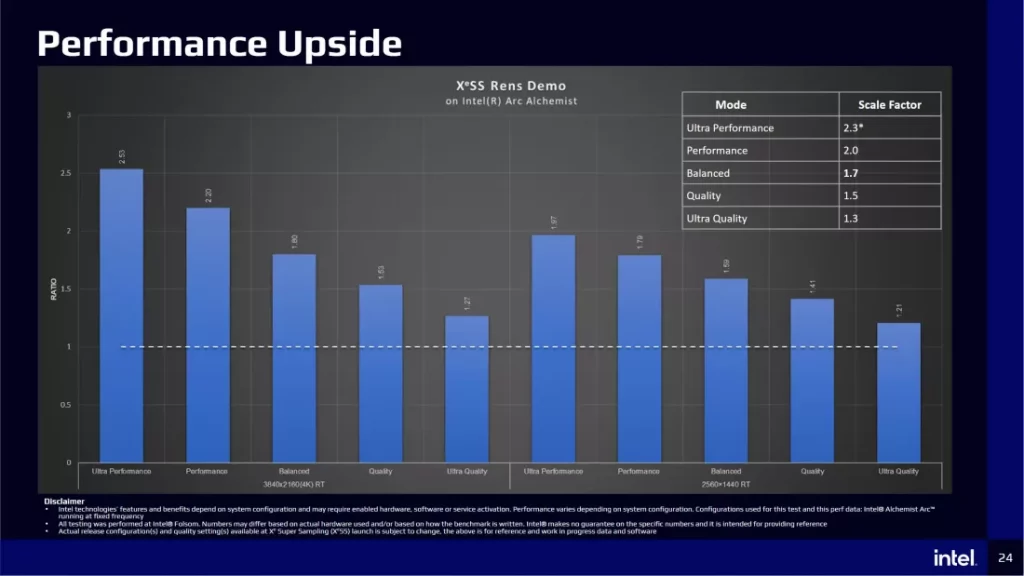Intel has presented a presentation at GDC 2022 on the ins and outs of its upscaling technology, just days before the debut of its first dedicated graphics cards. The slideshow provides a comprehensive overview of XeSS and what to expect in terms of performance improvement.
This week, Intel released a full overview of XeSS, the company’s image upscaler that competes with Nvidia DLSS and AMD FSR. The presentation largely repeats Intel’s past announcements, but it does include some new information.
XeSS, according to Intel, will have five scaling options, more than any of its competitors, allowing for a variety of frame rate and image quality sacrifices. Quality mode, for example, will scale an image by 50%.
Intel claims that upscaling a 1440p image to 4K improves performance by 53% over native 4K. However, the upscaled image’s quality in comparison to native resolution remains to be seen.

Everything Intel demonstrated about its XeSS upscaler at GDC 2022
According to Intel, XeSS will offer an Ultra Quality mode that only scales images by 1.3 for higher image quality, whereas DLSS and FSR both have a Quality mode as the maximum preset, which upscales images by 50%. Last summer, Redditors discovered indications of an anticipated Ultra Quality level for DLSS.
Each of the three technologies aims to boost gaming frame rates by scaling from lower to higher resolutions, but they do so in slightly different ways. Surprisingly, DLSS has achieved outstanding results using machine learning, which requires hardware that is only available on Nvidia’s current graphics cards.

FSR 2.0, which uses temporal upscaling and can run on AMD, Nvidia, and Xbox console GPUs, was also recently announced by Team Red. Intel XeSS also employs a temporal approach as well as AI accelerators. It will perform best on Intel’s XMX cores but should operate nearly as well on AMD or Nvidia devices using DP4a instructions.
Ghosting, which causes transient afterimages to appear when objects are in motion and has been a problem for DLSS and FSR, is one obstacle Intel is attempting to address. XeSS has also been included in Unreal Engine 4 and 5, where it is now in closed beta. The first Intel GPUs will launch for laptops on March 30.
Also Read:




